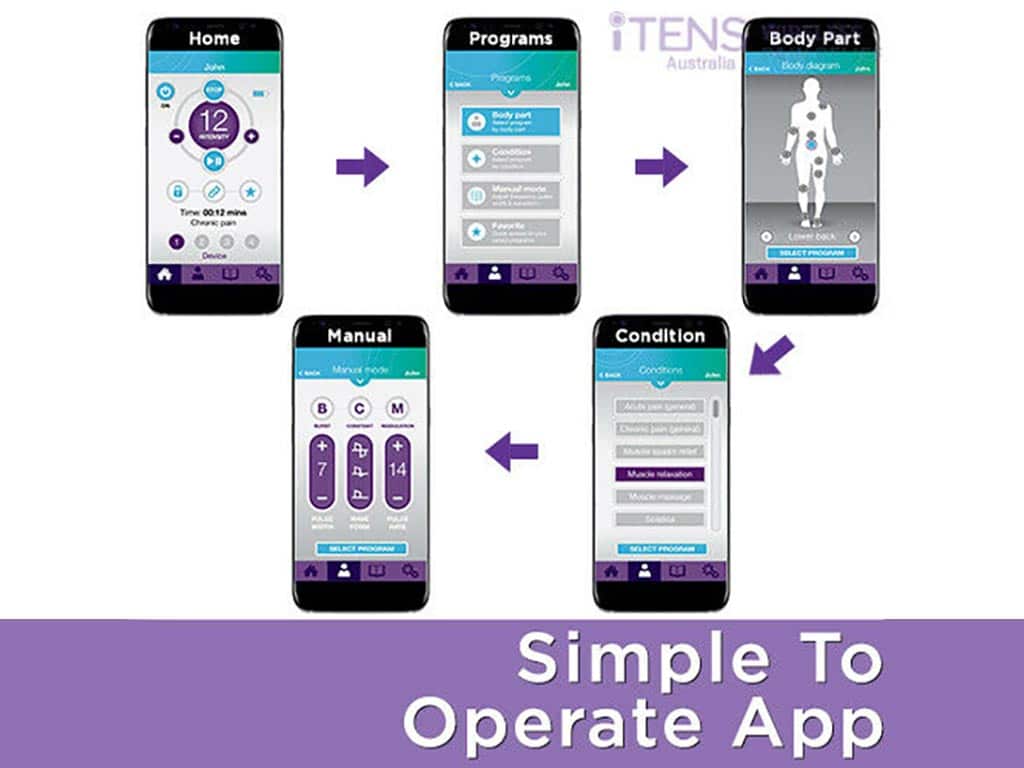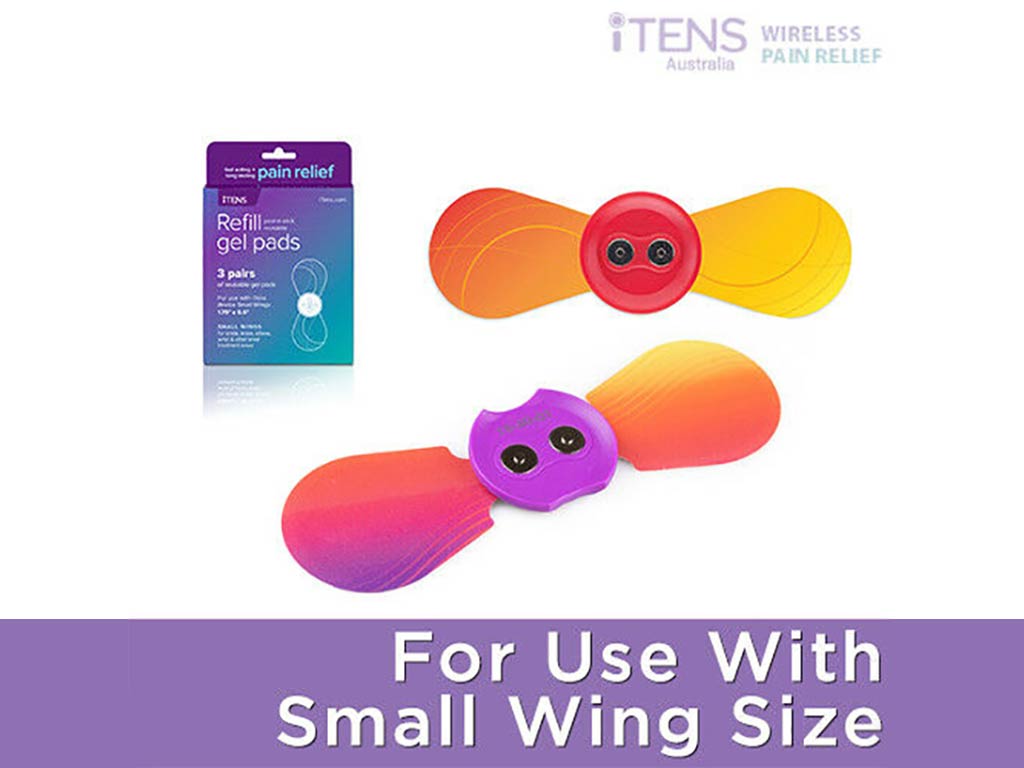
Groin pain is a common issue that can be caused by various factors like muscle strains and hernias. Fortunately, there are various treatment options, and one of them is Transcutaneous Electrical Nerve Stimulation (TENS). It sends electrical impulses to the body through electrodes placed on the skin. To use a TENS unit for groin pain, it is essential to place the electrode pads on the right areas. Then, turn the intensity level gradually to prevent sudden or overstimulation.
The prevalence of groin problems is high among athletes. However, anyone can be at risk of groin injuries. The symptoms include pain in the abdomen and upper thigh. This can create uncomfortable or abnormal sensations and limit the range of motion. Thus, pain relief methods are essential to managing the condition. This article will help provide a better understanding of how TENS can relieve groin injuries or chronic pain, operating the device, and electrode placement guide.
Understanding How a TENS Unit for Groin Pain Works
The groin area refers to the crease between the lower abdomen and the inner thigh. It is made up of a complex network of muscles, tendons, ligaments, and nerves that work together. It provides stability and movement to the hip joint. Hence, injuries to the groin muscles can lead to reduced activity.
When using a TENS unit for groin pain, it is essential to understand how the device functions. It typically consists of a portable controller and adhesive electrode pads placed on the skin. It works by sending mild electrical impulses to the nerves in the affected area. This can provide temporary relief from groin strains.
The electrical pulses stimulate the nerves to block pain signals in the spinal cord from reaching the brain. In addition, the electrical stimulation triggers the release of natural painkillers like endorphins. It also helps increase blood flow, improving the circulation and reducing any inflammation in the area. As a result, it provides a non-invasive and drug-free approach to pain relief.
Common Causes and Types of Groin Pain
- Acute groin injuries like pulled muscles or injuries to the tendons and adductor muscles.
- Hernias occur when an organ or fatty tissue pushes through a weak spot in the surrounding muscles.
- Kidney stones often cause referred pain in the groin area.
- Infections or inflammation in the urinary tract, genitals, or reproductive organs.
- Hip joint problems, such as arthritis or hip labral tears.
- Nerve-related conditions, such as sciatica or pinched nerves in the lower back.
- Athletic groin pain. Common among people who play hockey and football.
- Repetitive overuse injuries from running, cycling, or activities engaging in kicking.

How to Use a TENS Unit for Groin Pain
TENS therapy can be an effective treatment of groin pain. To use a TENS unit, first place the electrode pads on the affected area. Ensure the pads are secured and do not move or remove easily. Then, turn on the device and set the parameters to the desired levels. The settings may depend on the severity of the groin strain injury.
When using a TENS unit for groin pain, it is important to adjust the frequency and intensity settings to find the optimal level of relief. The frequency refers to the number of electrical pulses delivered per second, measured in Hertz (Hz). The intensity refers to the strength or power of the electrical pulses, typically measured in milliamps (mA).
The treatment duration may last for 30 to 45 minutes. After the sessions, users may turn off the TENS unit and remove the electrodes. It is important to balance the strength of the electrical stimulation and individual comfort level. It is also vital to follow the instructions of the user manual or the recommendations of a medical professional.
Adjusting the Frequency and Intensity
It is vital to start with the lowest intensity level and gradually increase as tolerated. Individuals with longstanding adductor groin pain may use low-frequency stimulation to provide long-lasting relief. This level is best for releasing endorphins and promoting blood circulation. Furthermore, relaxing the muscles can help increase the range of motion.
On the other hand, individuals with acute groin injuries may benefit from higher-frequency stimulation to help block pain signals. While using the device, ensure that the stimulation does not cause further pain. If it adds to the discomfort, reduce the frequency or intensity level.

Proper Electrode Placement When Using a TENS Unit for Groin Pain
It is crucial to ensure proper electrode placement when using a TENS unit for groin pain to prevent unwanted risks. Generally, place the electrode pads on the skin surrounding the affected area. For groin injury management, position one pad where the abdomen creases into the leg and the other on top of the inner thigh or adductor muscle.
Using a TENS machine is also suitable for groin injury prevention. Electrical nerve stimulation can help strengthen the adductor muscles, which helps to minimise the risk of groin strains. To use for rehabilitation or stimulation, place the electrodes on top of the targeted muscle. Moreover, athletes with groin pain may combine TENS with physical therapy to enhance the effectiveness of groin injury management.
Equally important, avoid electrode placement on sensitive areas, such as directly over the genitals, joints, or bony areas. Additionally, do not place the electrodes on open wounds and broken, irritated, or infected skin. Lastly, avoid putting the pads on the spinal column. If unsure about the proper electrode placement, consult with a healthcare provider for guidance.
When to See a Doctor?
It is important for individuals with acute or chronic groin strains to see a doctor in certain situations. Firstly, seek medical attention for sports-related groin pain. This may include sudden injuries while playing. Secondly, consult a doctor if experiencing loss of functions in the adductor muscles or surrounding muscles.
Lastly, visit a medical professional if TENS and other conservative treatment programs do not alleviate the symptoms. In some cases, a doctor may recommend a surgical intervention for patients with groin pain. Other symptoms to look out for are weakness in the legs, unexplained weight loss, and uncontrolled bladder or bowel movement.
Conclusion
There are many factors for groin injury, including playing sports or underlying health conditions. The primary goal of TENS is to provide a drug-free and non-invasive treatment program for pain and injury management. Using a TENS unit for groin pain involves the use of electrode placement in the affected area and adjusting the stimulation to a comfortable level. This can not only relieve pain but also restore normal functions of the muscles.
Furthermore, TENS therapy helps minimise the potential harmful effects of pain medicines. Individuals may combine TENS with ice packs and therapeutic exercises to enhance the effectiveness of treatment. However, if conservative interventions are not enough, individuals or injured athletes should consult a medical professional as soon as possible. They can help determine the underlying cause of pain and recommend appropriate treatment options. Proper medical care is vital to minimise the risk of groin problems and aid in pain relief.







